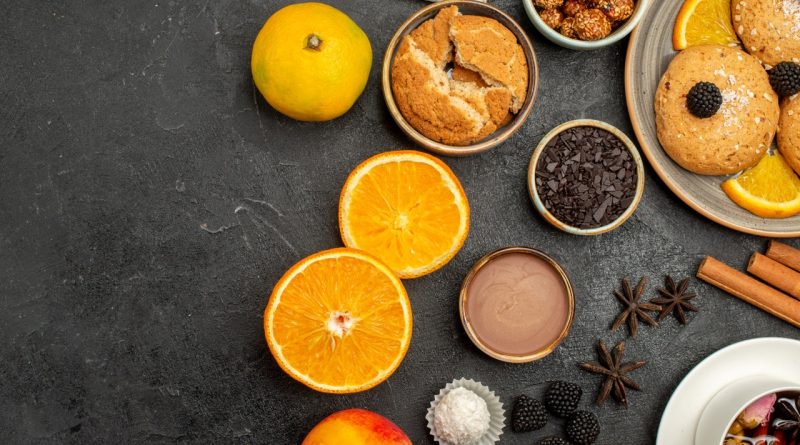How to Compost Food Scraps for a Zero-Waste Kitchen
In today’s world, where sustainability is becoming increasingly important, composting food scraps is an excellent step toward a zero-waste kitchen. Composting not only reduces the amount of waste that ends up in landfills but also provides nutrient-rich soil for gardening and landscaping. By transforming your kitchen scraps into compost, you minimize your environmental footprint while enriching the earth. This article will guide you through the essentials of composting food scraps, from understanding the basics to maintaining your compost bin for optimal results.
Understanding the Basics of Composting Food Scraps
Composting is a natural process that involves the decomposition of organic matter, such as food scraps, yard debris, and other biodegradable materials. By creating a balanced environment of carbon-rich "browns" (like dry leaves and cardboard) and nitrogen-rich "greens" (such as fruit and vegetable scraps), microorganisms break down the waste into nutrient-rich compost. This process not only recycles nutrients but also enhances soil structure and fertility.
To successfully compost, it’s important to understand what can and cannot be composted. Most kitchen scraps, like vegetable peels, coffee grounds, and eggshells, are suitable for composting. However, certain items such as dairy, meat, and oily foods can attract pests and produce unpleasant odors. Familiarizing yourself with the dos and don’ts of composting will help streamline the process and ensure a successful composting experience.
Composting can be done on various scales, from small countertop bins to larger outdoor systems. Regardless of the method you choose, the core principles remain the same: create a balanced mixture of materials, maintain proper moisture levels, and provide adequate aeration. Understanding these basics lays the foundation for a thriving compost system that benefits your kitchen and the environment.
Choosing the Right Composting Method for Your Kitchen
When it comes to composting in your kitchen, several methods cater to different lifestyles and space constraints. If you have limited space or are just starting your composting journey, consider using a countertop compost bin or a worm bin (vermicomposting). A countertop bin allows you to collect kitchen scraps conveniently while minimizing odors. For a worm bin, red wigglers are used to break down organic matter, producing nutrient-rich vermicompost that is excellent for plants.
For those with outdoor space, traditional compost bins or piles are a great option. These methods allow for larger quantities of composting materials and are ideal for avid gardeners. Outdoor composting requires regular turning to aerate the pile, which ensures that the decomposition process occurs effectively. Additionally, other options such as compost tumblers can expedite the process and reduce the time it takes to produce usable compost.
The choice of composting method should align with your lifestyle, the amount of food waste you generate, and the space available. Each method has its advantages and challenges; therefore, it’s essential to consider what works best for you. Regardless of the chosen method, composting promotes a sustainable approach to managing kitchen waste while contributing to a healthier environment.
Essential Items to Include in Your Compost Bin
To create a successful compost bin, it’s crucial to include the right mix of materials. The ideal compost contains a balance of carbon-rich "browns" and nitrogen-rich "greens." Browns include materials like dried leaves, cardboard, and shredded paper, while greens consist of vegetable scraps, fruit peels, and coffee grounds. This balance is essential for promoting healthy microbial activity that leads to effective decomposition.
In addition to kitchen scraps, it is beneficial to include some garden waste, such as grass clippings and small branches. These materials help aerate the bin and provide a variety of textures, which can improve the composting process. Avoid adding any non-biodegradable items or materials treated with chemicals, as they can hinder the process and harm the environment.
Finally, a small amount of soil or finished compost can accelerate decomposition by introducing beneficial microorganisms. Strive for a well-aerated mixture by turning your compost regularly, which allows oxygen to reach the microorganisms. This diverse combination of items will create a thriving compost system that produces high-quality compost for your garden.
Maintaining Your Compost for Optimal Results and Health
Maintaining your compost heap is essential for ensuring the process runs smoothly and efficiently. Start by monitoring moisture levels; a well-balanced compost should feel like a damp sponge. If it’s too dry, add some water or more green materials. On the other hand, if it’s too wet, incorporate more browns to help absorb excess moisture and prevent unpleasant odors.
Aeration is another critical component of compost maintenance. Regularly turning your compost bin or pile ensures that oxygen reaches the microorganisms responsible for breaking down organic matter. This process not only speeds up decomposition but also helps to prevent the compost from becoming compacted, which can lead to anaerobic conditions. Aim to turn your compost every few weeks, or as necessary, to keep it aerated and productive.
Lastly, be patient and allow time for your compost to mature. Depending on the materials and conditions, compost can take anywhere from a few weeks to several months to break down fully. Once it reaches a dark, crumbly texture and smells earthy, it is ready to be used in your garden or potted plants. Regular maintenance and an understanding of the process will lead to successful composting and a healthier kitchen environment.
Composting food scraps is a rewarding and sustainable practice that contributes to a zero-waste kitchen while providing valuable nutrients for gardening. By understanding the basics of composting, choosing the right method, including essential items, and maintaining your compost effectively, you can transform kitchen waste into a resource rather than a burden. Embrace the journey of composting, and you will find that it enhances not only your kitchen’s sustainability but also your connection to the environment.
